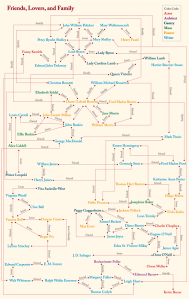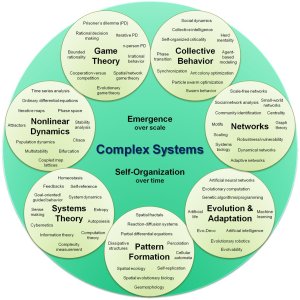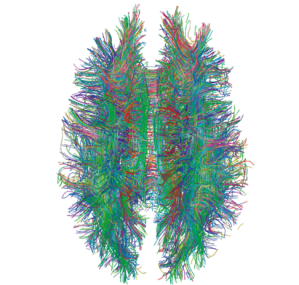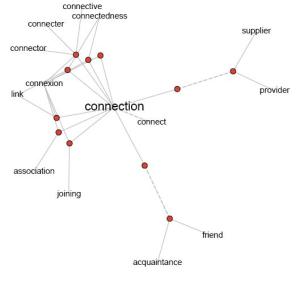
In my previous post on interconnectivity I gave an example of some literary and historical interconnections. Actually this kind of interconnection between people and events is quite easy to find, as demonstrated by this graphic from Lapham's Quarterly.
Probably the most famous examples of this interconnected way of looking at things are the televisions documentaries, books, and magazine articles of James Burke, in particular Connections. Burke showed the often surprising lines of influence that drove scientific innovations. This was a direct challenge to the more linear view of history, and in particular the history of science and technology. Instead of progressing in small incremental steps, Burke sees innovation often taking surprising leaps from one seemingly unconnected area to another, and this kind of cultural influence can be seen in areas other than science (as Burke sometimes demonstrates in his various writings).1 He also has an excellent project on the go called the Knowledge Web, an interactive and visual mapping of these connections for educational purposes (check out the video overview).
A similar example is the book Joined Up Thinking, in which author Stevyn Colgan demonstrates the interconnected nature of a vast array of “trivia”, with often quite entertaining effect. Colgan casts his net much more widely than Burke does, in order to show not the surprising course of innovation but instead the highly interconnected nature of our modern culture.2
Finding these sorts of interconnections is, however, more than just an intellectual parlour game.3 There is a serious point to be made here. First of all, interconnectivity is a property of complex systems, which is a concern not just of scientists and mathematicians, but of social sciences such as economics, sociology, and anthropology, and I would argue that such an approach would be useful for the study of history and culture too. A complex system is any system composed of many interconnected parts, and thereby exhibits properties not obvious from the properties of the individual parts. In colloquial terms, it is more than the sum of its parts. This is a phenomenon called emergence.

Perhaps the most notable example of emergence is the mind which is seen as arising from the complex system of interconnected neurons in the brain. This approach to understanding cognition is known as connectionism. According to this model, human cognition is the result of the interaction of the 100 billion neurons, each of which with several thousand synaptic connections, for a total of several hundred trillion synaptic connections.4 The overall map of these connections is often referred to as the connectome, perhaps most famously by neuroscientist Sebastian Seung, who advanced the proposition "I am my connectome".5 The idea is that, similar to the way your genome makes you physically who you are, your connectome makes you mentally who you are. According to this hypothesis, the pattern of these connections encodes all your thoughts, memories, and personality. It is due to the vast number of connections in the brain that something as complex as cognition is able to arise.6

In addition to cognition generally speaking, the human brain is responsible for producing the specific cognitive faculty of language.7 Unsurprisingly perhaps, interconnectivity is important in language as well, and some of the cognitive approaches to language are based on this. For instance, in frame semantics, the meanings of words or concepts is structured not like a dictionary but like an encyclopedia. That is to say, one cannot understand a word without also knowing an array of related concepts. Thus, to understand the word sell, one must have knowledge a number of related concepts in the domain of financial transactions, such as a buyer, money, etc. Thus, a word evokes an semantic frame or domain of related knowledge, and it is by that frame that we understand the word.8 Sometimes a word can belong in more than one frame, and thus have different meanings depending on context. Bank in the context of a river has a very different meaning than bank in the context of money, and one must have a broad conceptual and cultural understanding to be able to correctly interpret such expressions as “a strong man”, “a strong woman”, “a strong smell”, “a strong argument”, and so on. Thus it is the interaction of words that creates meaning. One can envisage a kind of web of words that collectively produce a meaning not entirely clear from the meanings of the individual words themselves. In a sense, this interconnected property of language is visually represented in the excellent language tool Visual Thesaurus (which you can use in a limited free trial or purchase a subscription). This is an example of a semantic network. See also, the lexical database WordNet, and both WordVis and Lexipedia, which provide graphical representations of the WordNet semantic network in a structure very similar to that of the Visual Thesaurus (and are free to use without a subscription). You can look up words and click between related words which are organised as a set of interconnected nodes to explore whole semantic domains.9

So in a sense, I’m exploring interconnectivity on two levels, the micro level of cognition and language, and on the macro level of culture and history, and further exploring how these systems interact, since language, culture, and thought are constantly interacting and influencing each other. And it is no surprise, given the interconnected nature of our brains that we are pattern recognition machines, and seem to be driven to seek out patterns in the complex world around us.
1 You can see Burke’s various television documentaries on this YouTube channel (including also his documentary on neural connections called The Neuron Suite). There is, of course, a list of his books on Wikipedia, and his Scientific American articles were collected and republished as the book Circles: 50 Round Trips through History, Technology, Science, Culture. Interesting bit of trivia, Burke studied medieval English literature at Oxford University. No wonder I like him so much! [back]
2 Colgan has a follow-up book in the works, Constable Colgan’s Connectoscope. Click here to find out more, and learn how you can support the publication of this book. I highly recommend it. [back]
3 Though it can often be a very fun one to engage in. Try it for yourself! [back]
4 Apparently a 3-year-old child has 1 quadrillion synapses, but this number declines into adulthood. [back]
5 See his TED talk “I am my connectome” and his recent book Connectome: How the Brain's Wiring Makes Who We Are. [back]
6 Though there are several projects underway to map connectomes, it’s still a long way away that we’ll be able to do so with the complete human connectome. The only complete connectome mapped is the 302-neuron nervous system of the roundworm C. elegans. However, Seung, through his organisation WiredDifferently, is crowdsourcing scientific research by enlisting the help of volunteers. If you click through to EyeWire, you can play an online game that maps part of a connectome (the neural structure of the retina). It's set up as a game to get people to participate, but it actually helps map the connectome, spreading the work out amongst many people. Crowdsourced scientific research, very cool! Of course lexicographers had this method worked out years ago, making use of volunteer readers contributing words, as with the Oxford English Dictionary. The internet certainly makes it a lot more effective. [back]
7 Which can itself therefore be seen as an emergent phenomenon. [back]
8 The notion of frame semantics was first proposed by Charles J. Fillmore, who explains "by the term 'frame' I have in mind any system of concepts related in such a way that to understand any one of them you have to understand the whole structure in which it fits" ("Frame Semantics", Linguistics in the morning calm, ed. The Linguistic Society of Korea, 111-37, Seoul: Hanshin). [back]
9 Go ahead and play with these language tools, they're lots of fun. It's like getting lost following the links in Wikipedia, only with word meanings! [back]
